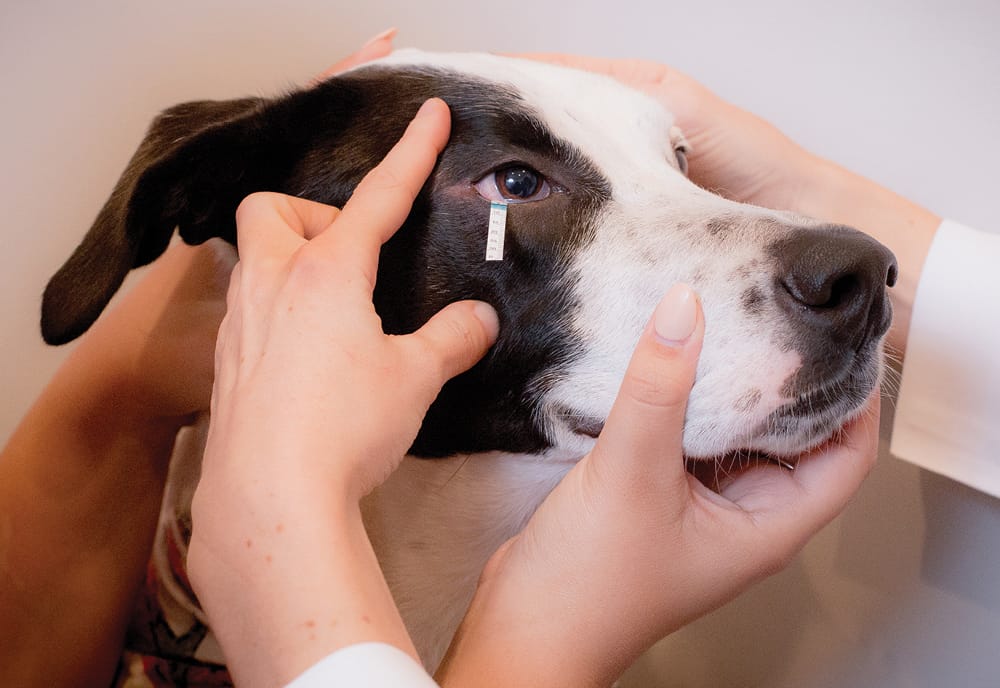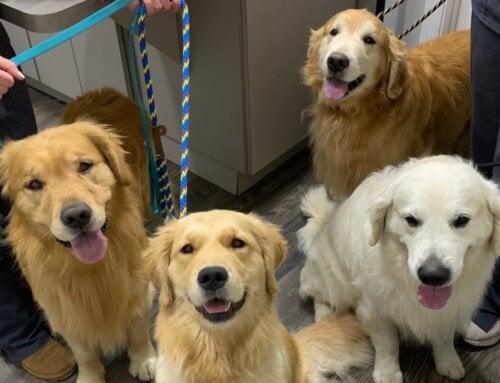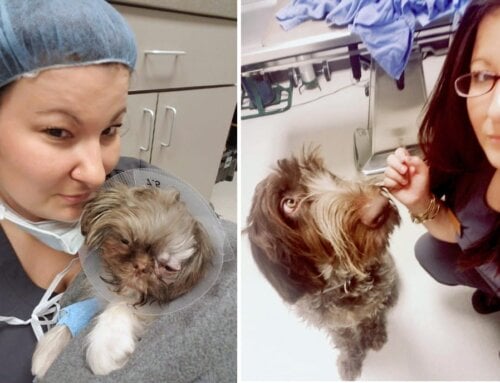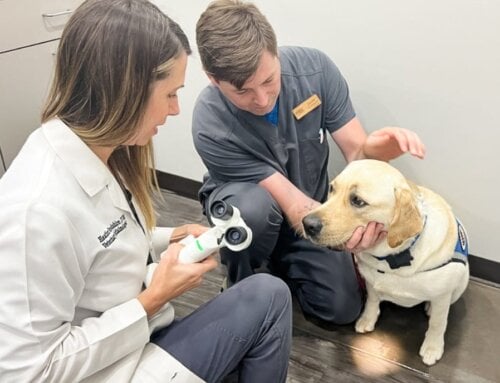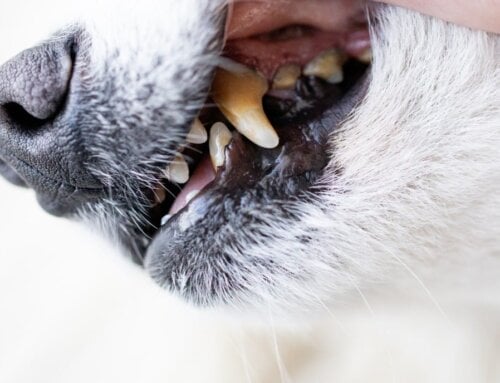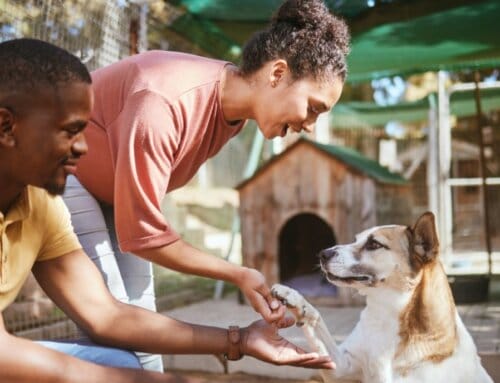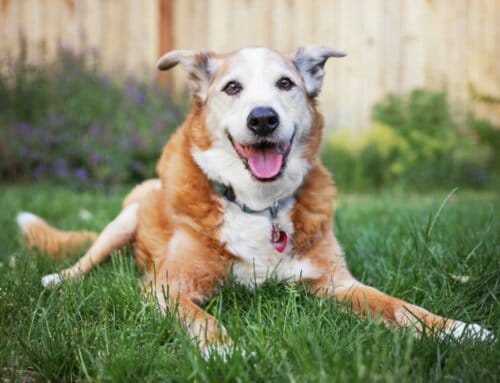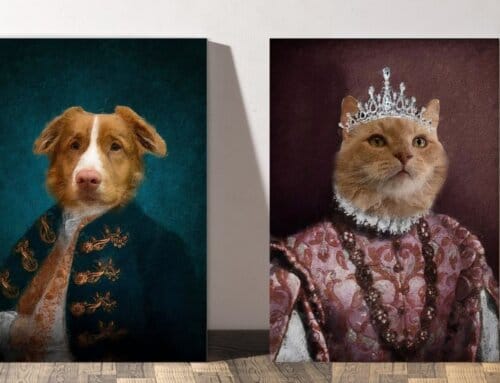The value of having animals undergo an annual physical checkup is widely known and practiced. But many pet owners don’t always recognize that eyesight and ocular health are an integral part of their pet’s overall health and wellbeing. You may have wondered what takes place during an initial examination. In this post, we will break it down for you, so you will know what to expect from start to finish.
Referrals and scheduling your appointment
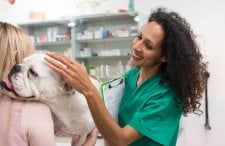 Most pet patients we see are referred to us by their family veterinarian. If you have noticed changes in your pet’s eyesight, please share this information with them first. If they feel your pet should be seen for ocular concerns, they will complete the referral form found on our website. Once we receive this, we will contact you to schedule your appointment. If you are making a personal appointment request, you may also use this same form. Or, you can call us at 757-749-4838.
Most pet patients we see are referred to us by their family veterinarian. If you have noticed changes in your pet’s eyesight, please share this information with them first. If they feel your pet should be seen for ocular concerns, they will complete the referral form found on our website. Once we receive this, we will contact you to schedule your appointment. If you are making a personal appointment request, you may also use this same form. Or, you can call us at 757-749-4838.
Arrival and check in
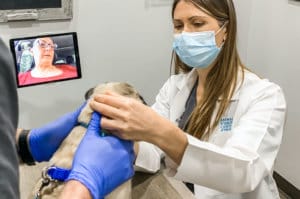 On arrival for your pet’s appointment, please park in one of the designated parking spaces. Then call us to check in with one of our client care liaisons at 757-749-4838. We will provide you with a sanitized iPad for your use during the virtual appointment.
On arrival for your pet’s appointment, please park in one of the designated parking spaces. Then call us to check in with one of our client care liaisons at 757-749-4838. We will provide you with a sanitized iPad for your use during the virtual appointment.
A staff member will bring your pet into the clinic, and a team member will stay with them throughout the entire appointment. Once your pet is in the exam room, we will call from our iPad so that you can be present for the exam and discuss any concerns or questions directly with our veterinarian.
If you are new to using an iPad, no worries! One of our team members will come to your car to assist. They will make sure you are able to answer our FaceTime call, while confirming that the Internet connection is secure.
The examination process
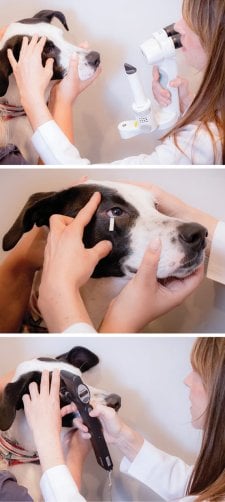 During the ophthalmic exam, our veterinarian may perform a number of tests. These will help identify any problems with your pet’s eye or underlying diseases and conditions that may affect their eyesight. These tests are generally non-invasive and painless for your pet.
During the ophthalmic exam, our veterinarian may perform a number of tests. These will help identify any problems with your pet’s eye or underlying diseases and conditions that may affect their eyesight. These tests are generally non-invasive and painless for your pet.
You will see that we use specialized instruments to allow for a more detailed examination than what may be possible with your family veterinary clinic. First, using a slit-lamp biomicroscope, we evaluate the front portion of the eye on a microscopic level. Next, we’ll look at the back of the eye to view the retina and optic nerve, using indirect ophthalmoscopy and a series of condensing lenses.
When needed, we then take digital anterior and posterior segment photographs of the eye. These provide a benchmark for accurate monitoring of any disease that may be present and precise findings for you or your family veterinarian. Our practice is also equipped to perform ophthalmic tests such as tonometry and gonioscopy for glaucoma; ocular ultrasound for evaluating intraocular masses and orbital disease; and electroretinography testing for retinal disease.
We will discuss our findings with you as we examine your pet, along with recommendations for therapies to help manage their condition. You, of course, may ask questions, and together we will discuss next steps.
Check out and follow up appointments
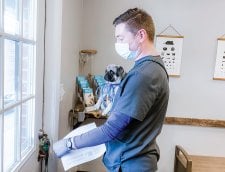 After the exam, we will end the FaceTime call, and you will receive a call from our client care liaison to begin the checkout process. At this time, we will schedule your pet’s recheck appointment and collect payment. A team member will then bring your pet back to your car, collect the iPad and review any discharge instructions and/or medical therapy.
After the exam, we will end the FaceTime call, and you will receive a call from our client care liaison to begin the checkout process. At this time, we will schedule your pet’s recheck appointment and collect payment. A team member will then bring your pet back to your car, collect the iPad and review any discharge instructions and/or medical therapy.
We hope this information is helpful, as you prepare for your first appointment with us. An animal’s ocular health is the key to their living a full, active and healthy life; and my team and I are dedicated to providing the highest quality ophthalmic care available for our patients. Our mission is to help your pet see a better life!
![]()
Dr. Heather Brookshire, DVM
Diplomate, American College of Veterinary Ophthalmologists
